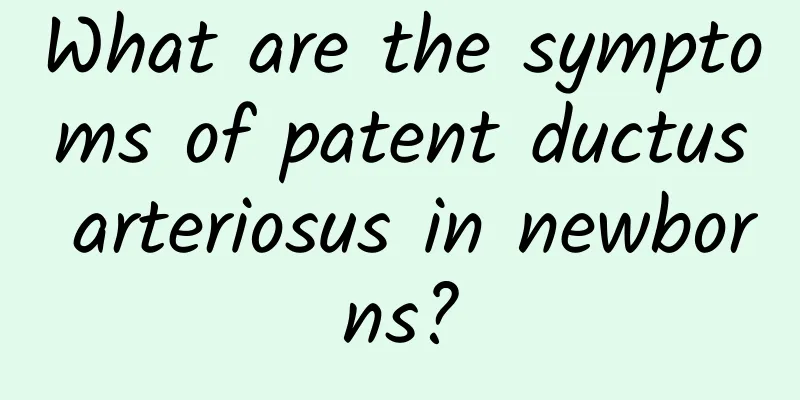What are the symptoms of patent ductus arteriosus in newborns?

|
A patent ductus arteriosus in a newborn may cause symptoms such as shortness of breath, rapid heartbeat, and feeding difficulties. If these symptoms occur, you should seek medical attention as soon as possible to avoid affecting the health of the newborn. Patent ductus arteriosus can be treated with medication, surgery, or observation. 1. Causes of patent ductus arteriosus: Patent ductus arteriosus (PDA) refers to the failure of the ductus arteriosus, which connects the pulmonary artery and the aorta during the fetal period, to close on time after birth. Generally, premature babies are more likely to have patent ductus arteriosus because their ductus arteriosus takes longer to mature. In addition to genetic factors, environmental factors such as maternal infection during pregnancy, smoking, or exposure to certain drugs may also increase the risk of the disease. Physiological factors such as low body weight and hypoxia may also lead to the occurrence of this disease. 2. Symptoms of patent ductus arteriosus: Common symptoms of patent ductus arteriosus include shortness of breath, rapid heartbeat, heart murmur, difficulty gaining weight and feeding. In severe cases, signs of heart failure may appear, such as lower limb edema, fatigue and extreme breathing difficulties. These symptoms should attract the attention of parents, because if not treated in time, it may have an adverse effect on the baby's growth and development and cardiopulmonary function. 3. Treatment of patent ductus arteriosus: Treatment depends on the size of the PDA and the severity of the symptoms. For babies with mild symptoms or small ducts, immediate treatment may not be needed, and regular follow-up is required to observe whether the ductus closes on its own. For children with significant symptoms, non-surgical treatment may include taking non-steroidal anti-inflammatory drugs (such as ibuprofen or indomethacin) to promote closure of the ductus arteriosus. For cases that must be treated surgically, ductus ligation and transcatheter occlusion are common treatments. If a newborn baby has symptoms of patent ductus arteriosus, he or she should seek medical attention immediately to understand the condition and take appropriate measures. Understanding and treating the symptoms and treatment methods of this condition are crucial to the baby's healthy life. Parents should communicate with the doctor in time to choose the treatment plan that is most suitable for the baby. The ultimate goal of treatment is to ensure that the baby's heart and lungs can work properly, so as to ensure healthy growth. |
<<: Is Kawasaki disease contagious in infants?
>>: Can Kawasaki disease in children be cured?
Recommend
How to treat baby's cough
There are actually many reasons why young childre...
What are the symptoms of convulsions in children?
There are many symptoms of pediatric convulsions,...
What should I do if my baby has jaundice of 14.1 on the fifth day after birth?
What should I do if my baby has jaundice of 14.1 ...
What causes jaundice in newborn babies?
Newborn jaundice is mainly caused by bilirubin me...
What should children eat for diarrhea and vomiting? Several dietary treatments to relieve diarrhea and vomiting in children
If a child has diarrhea and vomiting, you should ...
Which department should children with ADHD go to in the hospital?
Parents often feel confused about which hospital ...
How to care for children with acute laryngitis at night
When a child has acute laryngitis at night, stay ...
How much does it cost to treat diarrhea in children?
How much does it cost to treat diarrhea in childr...
How much does it cost to cure diarrhea in children?
How much does it cost to cure diarrhea in childre...
How to treat hand, foot and mouth disease in children
Hand, foot and mouth disease in children is usual...
Effective treatment for jaundice in babies
What is the effective treatment for reducing baby...
How is Kawasaki disease diagnosed in children?
The cause of Kawasaki disease in children is not ...
What foods to eat for malnutrition
Choosing the right foods can help us recover quic...
Massage techniques for children's cough
Coughing is a common phenomenon in children, but ...
What nutrients are needed in the diet for Kawasaki disease
What nutrients are needed in the diet for Kawasak...









